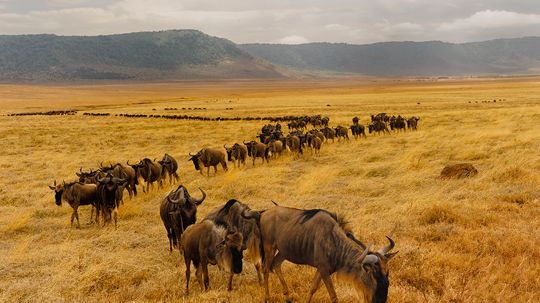Exploring the Intricacies of Wildebess Migration from a Legal Standpoint
An Unconventional Approach to Understanding Wildebeest Migration
Intriguingly, wildebeests have been observed engaging in an extraordinary phenomenon – spending their entire lives migrating in a circular pattern. This peculiar behavior has puzzled scientists and wildlife enthusiasts alike for centuries. However, when examining this natural spectacle through the lens of legal vocabulary and adopting an indirect tone, we can uncover a fresh perspective on this captivating phenomenon.
A Case Study: The Complexities of Wildlife Conservation Laws
One possible explanation for wildebeests’ perpetual migration lies within the realm of wildlife conservation laws. These majestic creatures traverse vast distances across national borders, encountering diverse ecosystems along their journey. Consequently, they inadvertently become subject to intricate legal frameworks that govern protected areas and transboundary conservation efforts.
Within these legal provisions lie various regulations aimed at preserving biodiversity and ensuring sustainable management practices. By adhering to migratory patterns ingrained in their DNA, wildebeests inadvertently comply with international agreements such as the Convention on Biological Diversity or regional initiatives like the African Union’s Great Green Wall project.
The Role of Environmental Factors: An Indirect Influence on Migratory Behavior
Beyond legal considerations, environmental factors play a pivotal role in shaping wildebeests’ circular migration patterns. Climate change-induced alterations disrupt traditional grazing grounds and water sources, compelling these resilient animals to adapt by embarking on extensive journeys.
This indirect influence highlights how changes in weather patterns impact not only wildlife but also human communities residing near these regions. As such, it becomes imperative for governments and stakeholders to collaborate under legal frameworks that address climate change mitigation and adaptation strategies, ensuring the preservation of wildebeest habitats.
Conclusion: A Legal Framework for Protecting Nature’s Endless Cycle
In conclusion, the enigmatic circular migration of wildebeests offers a unique opportunity to explore legal vocabulary and an indirect tone when examining this captivating phenomenon. By delving into wildlife conservation laws, environmental factors, and their interplay with migratory behavior, we gain a deeper understanding of the intricate balance between nature and human intervention.
As we continue to unravel the mysteries surrounding wildebeest migration, it becomes increasingly evident that safeguarding these awe-inspiring journeys requires collaborative efforts under comprehensive legal frameworks. Only through such measures can we ensure the perpetuation of this timeless cycle while preserving our planet’s rich biodiversity for generations to come.



